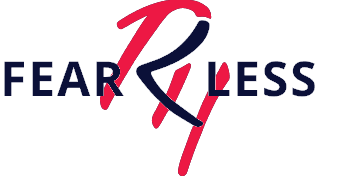A global pandemic.
Economic crisis.
Racial tensions.
Challenges with working from home.
Questions about what is safe and right, for you, for your parents, for your kids.
If your world feels like a tinder box soaked in gasoline sitting next to a sparking fire…you’re not alone.
Amid the deafening echoes of fear and anxiety the questions I hear most frequently asked in these unprecedented times might all be best summarized by this one:

Where are the grownups?
I think most all of us would be happy to follow the rules at this point if we understood what those rules were. But as the weight of fears piled upon one another crushes down on us, none of us feel we like we have the time or expertise to untangle the web of “right” and “wrong” choices, which, only drives more fear and confusion.
There are absolutely things in this world we need to fear – a deadly virus, racial inequity, economic despair (just to name a few). Things that, if ignored might in fact kill us. But while each of these fears is pressing, most of the time we live with these fears in the background – outside of the immediate life and death condition. But fear grips our brains in a way that doesn’t always allow us to separate ourselves from what feels like a tangible life or death fight. So how can we stay logical enough in these moments to make smart choices outside of that immediate fear? We have to be willing to pull back from it.
The thing about fear is that it’s biologically contagious and chemically upregulated automatically in our bodies. Contrarily, its counterpart, calm, requires active practice and development.
From birth, the sympathetic nervous system (the one that registers and responds to fear with a fight/flight/freeze mechanism) is fully developed and prepared to help us cope with emergency situations. You can readily see this response in newborns. They can (and do!) quickly upregulate their sympathetic nervous system when they experience discomfort which results in the characteristic screaming and crying. But the biological system that comforts and counters that upregulation (the parasympathetic nervous system) does not come fully developed. It’s more of a muscle that has to be built over time. It’s only after thousands of interactions with a soothing response from a caretaker that an infant will begin to develop a parasympathetic response to whatever fear or discomfort initially stimulated the upregulation of their sympathetic nervous system.
As adults, we are forced to wrestle with a similar issue. We are facing new challenges, discomfort and fears, but who is there to soothe us? Where is the adult to help us build that parasympathetic response to calm us down, and help us restore balance amid the fear?
I think we have to become one another’s caretakers. In these uncertain times we must at once be both the grownups attending to one another’s needs, and the infants who still need permission to feel the anxiety and fear, and to seek comfort. We need one another to remind us when we get into that cyclical, building fear response that we aren’t in immediate danger – at least not the kind where we will die within minutes if we don’t change course – so we can pull back and assess objectively. And we need one another to be vulnerable and willing to recognize that these fears are very real and can be overwhelming at times.
Here is how we can all be better caretakers for ourselves and one another.
- BREATHE. When you start to feel your anxiety and fear take over, force yourself to slow down. Take deep breaths. The slower you breathe the more your parasympathetic system will kick in and downregulate your anxiety from taking over. We can’t control our heartrates or the release of chemicals in our body, but by consciously slowing our breathing this will begin to sync up and align our other bodily responses to signal we are not in imminent danger.
- SORT YOUR FEARS. Our brains have a very limited ability to sort out real and perceived threats (and immediate from long-term!). Instead, they respond with the same trick when confronted with a tiger as they do a toddler pulling on your sleeve when you’re just trying to get a little work done and your job begins to feel like it’s on the line. In the case of the tiger, an increased heartrate and surge of glucose to your muscles is going to help. But for most of our modern “threats” (i.e. potential loss of a job) this outdated sympathetic nervous system response only hinders and clouds our thinking. I sometimes find it useful to ask myself, “is this stressor a tiger?” That lighthearted approach helps me sort out fears that are immediately life-threatening and need to be responded to with the urgency my brain insists, from those fears that feel urgent, but likely require me to slow down and strategize solutions.
- STEP AWAY. It’s easy to get caught up in fear. As social creatures, we are highly attuned to the emotional states of one another and our brains actually fire to reflect the mood and behaviors of others whom we are observing. Termed, mirror neurons, this emotional sharing was useful in helping to identify and empathize with how others in our social circles were feeling. But it’s also what makes fear so contagious. We match the cadence of anxiety shared by our peers. By the same logic though, calm too can be just as emotional contagious. When you surround yourself with people who are high anxiety, or bombard yourself with news stories that are crafted to sell using fear as their hook, you’re creating an environment for yourself to reflect these same heightened emotional states. Be willing to step away and surround yourself with other practitioners of calm.
- DON’T PUT A LABEL ON YOURSELF OR OTHERS. We are all going to be fearful or anxious at some point. That doesn’t make us fearful or anxious people. These are patterned responses and behaviors, not ways of being. It makes sense to be afraid of scary things and we have to allow ourselves to feel it all, before we take appropriate action. So allow yourself to be both the infant and the caretaker at times. It’s okay to be fearful. It doesn’t make us weak people. As long as we are mindful about our fears we won’t compound it with misplaced guilt or shame for not being “stronger” or more “brave.”
- ALLOW FOR CHANGE AND GROWTH. None of us have the answers right now and so we have to be willing to make decisions and take risks without all the information. Take action in small ways in one direction and then be prepared to pivot when new information arises. We have to embrace being willing to be wrong, or at least recognize that we couldn’t have made a “right” decision with the information we had at the time. That means being in a continuous state of potential change. How exciting! And it truly can be, since there is very little physiological difference between fear and excitement. We aren’t always going to make perfect choices but with the right framing that just means we have more of an opportunity for learning and growth.
Stay calm, curious and mindful about your fears. We all have to practice being adults in these times, but we all have the capability of being the caring role model that we need for ourselves and others. The more we can practice sorting our fears and developing our own parasympathetic responses rather than feeding on the fear of others, the less scary our world will be.









